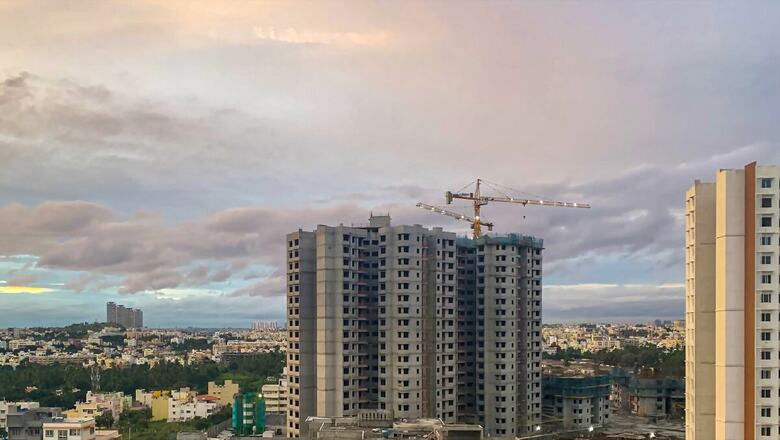
views
The Indian real estate market offers immense growth potential, but choosing the right location to invest in can be a daunting task. While location has always been the golden rule, navigating the complexities of infrastructure, demographics, and economic trends requires a sharper focus. This article equips you with five crucial data-driven factors to identify localities with high capital appreciation potential in India.
Also Read: Will Indian Real Estate Sector Fulfill The Promise Of Viksit Bharat?
1. Infrastructure Development: The Backbone of Growth
Infrastructure is the lifeblood of any thriving locality. Projects in well-developed areas can come at a premium. Key aspects of developed areas include metro connectivity, new highways, improved water supply, and sewage systems. Recent studies reveal that properties near operational metro stations in India have witnessed an impressive appreciation of 14-20% over the past five years. Additionally, amenities like parks, schools, and hospitals enhance the overall quality of life and attract residents, leading to increased demand and property appreciation ranging from 20-30%. It is ideal to invest in these areas for a good rental yield.
Pro Tip: Become a proactive investor. Track upcoming infrastructure projects through government websites like the National Infrastructure Pipeline or stay updated on local news announcements. Early knowledge of planned infrastructure developments allows you to identify areas poised for significant growth. Properties in less developed areas do not cost a premium and investing in these areas promises good returns in times to come. But they may not give a good rental yield presently.
2. Economic Growth and Employment Opportunities
Economic growth and job creation are undeniably linked to real estate appreciation. There’s a strong correlation between a growing economy and increased housing demand. The establishment of IT parks, Special Economic Zones (SEZs), or large manufacturing units acts as a major economic trigger, boosting job creation and attracting professionals. This surge in demand directly translates to a rise in property values. A diversified economy with a mix of industries is ideal, as it ensures sustained demand for housing across various segments.
3. Government Policies Shaping the Market Landscape
Government policies play a significant role in shaping the real estate market. Initiatives like the relaxation of Foreign Direct Investment (FDI) norms in real estate can boost investor confidence and lead to price appreciation. Stay updated on government press releases or industry analyses to understand policy changes that might impact specific localities. Additionally, be aware of local zoning regulations, development projects, and potential property tax changes – these factors can influence the long-term growth of an area.
4. Demographics: Understanding Who Drives Demand
India’s urbanisation story is far from over. Projections suggest that India’s urban population will reach a staggering 600 million by 2030, translating to massive demand for residential properties. A notable aspect of this demographic shift is the movement of young professionals from Tier II to Tier I cities in search of better career prospects.
Furthermore, the growing middle class with higher disposable income is a significant factor. Understanding migration patterns of young professionals towards specific cities or areas with booming job opportunities can provide valuable insights into areas likely to experience high demand and property value appreciation. The movement of people to cities such as Bangalore and Delhi is changing how real estate looks. Places with more jobs are seeing more people wanting homes. Knowing where people are moving helps predict which areas will see property values go up a lot.
5. Market’s Demand Supply Dynamics
With a greater influx of professionals moving into urban areas, the delicate balance between supply and demand in the real estate sector is undergoing significant disruption. This shift is having two notable effects on the urban landscape. Firstly, Tier 2 cities are emerging as new focal points for urban development.
As cities such as Bangalore attract a growing number of residents, the existing housing supply struggles to keep pace with the escalating demand. Consequently, the cost of living in these urban centres is on the rise. For instance, before the onset of the COVID-19 pandemic, a standard 1000 sq ft 2 BHK apartment in Sarjapur commanded a price tag of approximately Rs 60-80 lakhs.
However, in the aftermath of COVID-19, the same 2 BHK unit now fetches nearly Rs 1.2-1.4 crore due to heightened demand. This trend underscores the cyclical nature of the real estate market, with the current phase representing one of its most lucrative cycles. It illustrates that as demand outpaces supply, property values are poised to continue their upward trajectory.
When considering a property purchase, it’s crucial to assess not just the present situation but also reflect on the conditions from five years ago. Additionally, it’s wise to anticipate how the landscape might evolve over the next five years.
By considering these five data-driven factors – infrastructure development, economic growth, government policies, demographics, and real estate market trends – you can transform yourself from a passive investor to a well-informed one.
Remember, real estate research is an ongoing process. Stay updated, analyse data, and make calculated decisions to unlock the true potential of your real estate investment in India.
-The author is Co-founder & Chief Product and Technology Officer of NoBroker. Views expressed are personal.


















Comments
0 comment